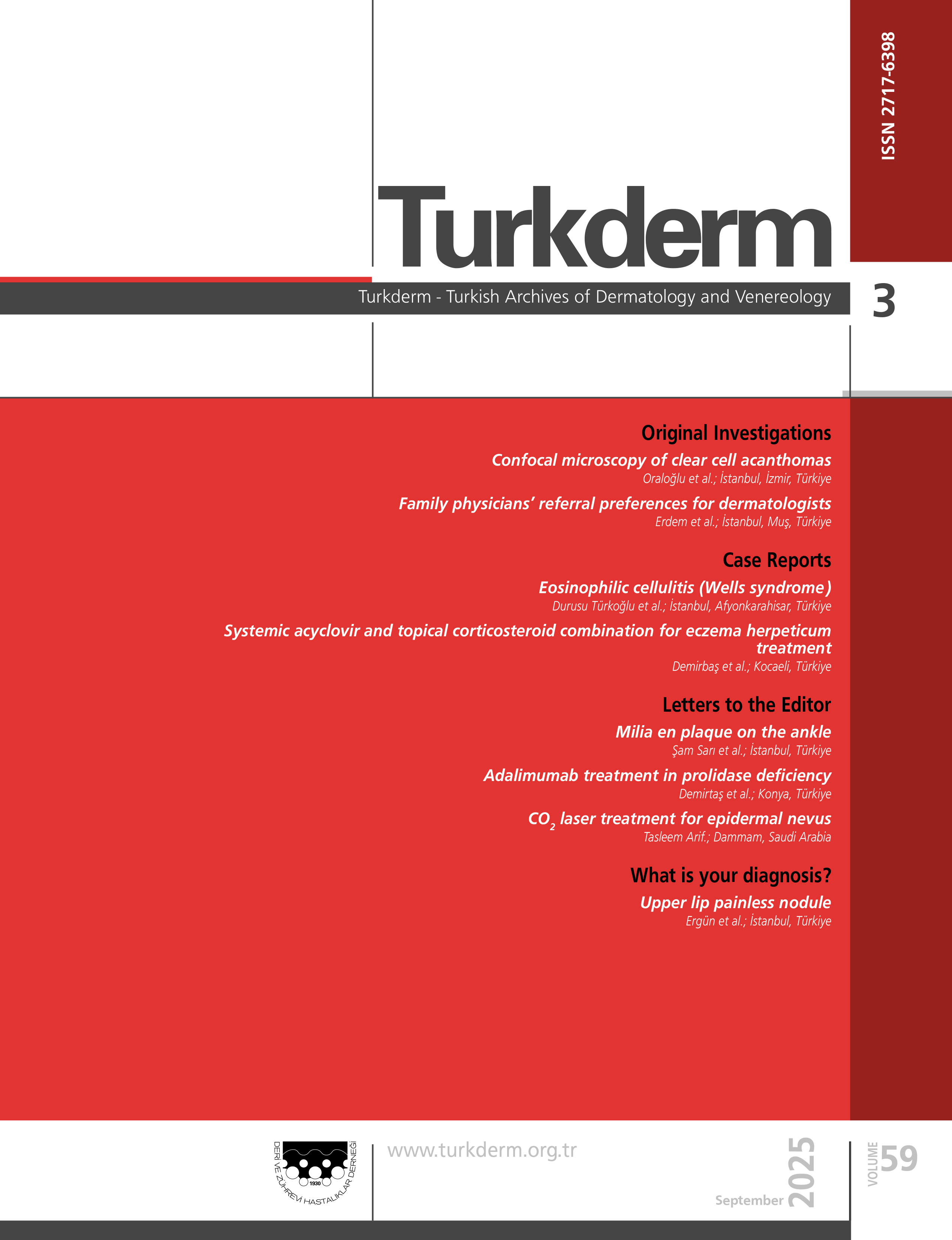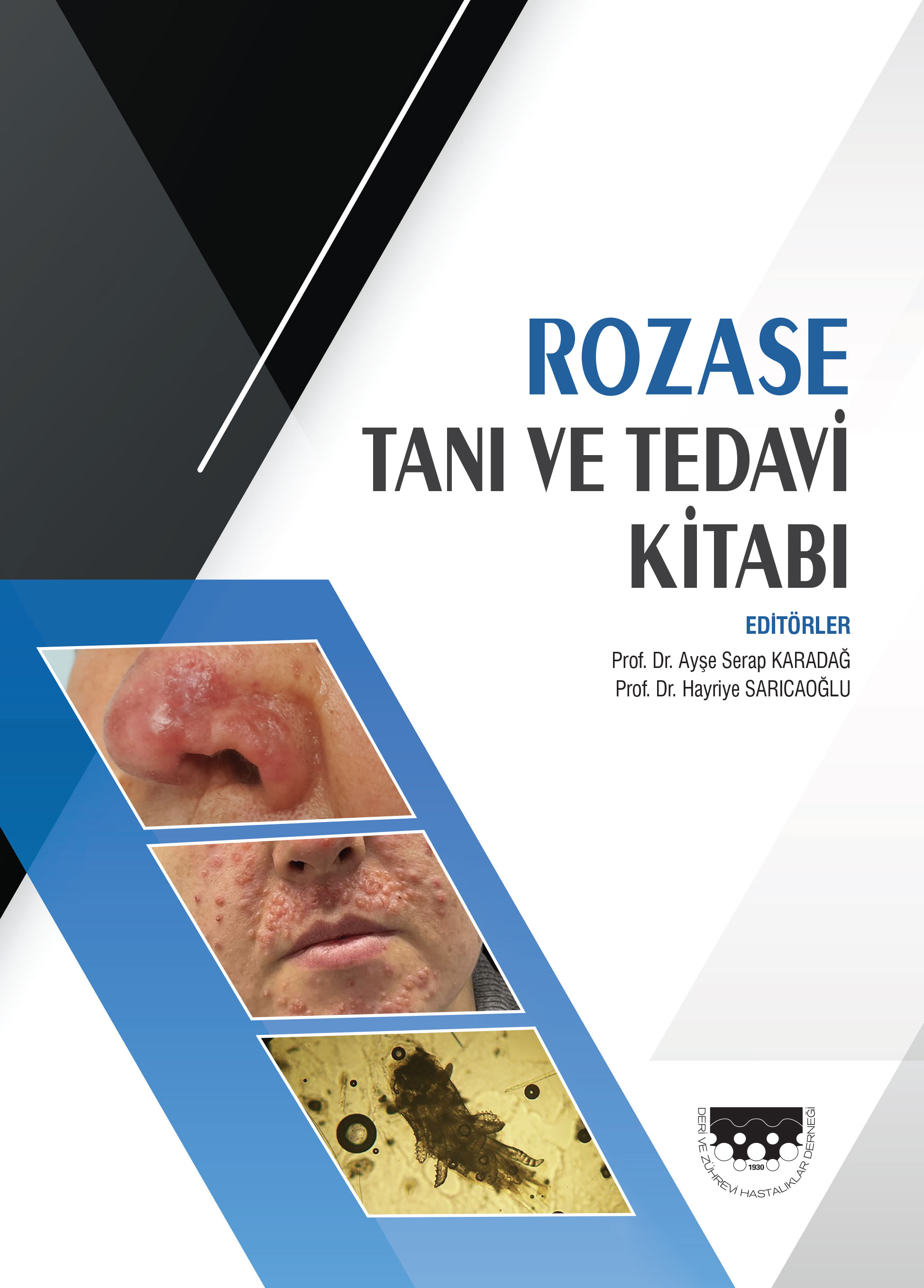Cutaneous leiomyosarcoma misdiagnosed as a keloid: A case report with dermatoscopy
Seher Bostancı1, Bengu Nisa Akay1, Merve Alizada2, Aylin Okçu Heper31Ankara University Faculty of Medicine, Department of Dermatology, Ankara, Türkiye2Mamak State Hospital, Clinic of Dermatology, Ankara, Türkiye
3Ankara University Faculty of Medicine, Department of Pathology, Ankara, Türkiye
Cutaneous leiomyosarcoma (CLMS), with an annual incidence of 0.2/100,000, is a very rare non-melanoma skin malignancy. CLMS has two subtypes: Dermal (primary) and subcutaneous; when diagnosed in the early period, the prognosis in the dermal type is better. CLMS is generally seen in the 6th and 7th decades of life and more frequently in the lower extremities and head and neck. Trauma, radiation, chemicals, and sun rays have been reported as the factors involved in its etiology. Epidermal cysts, skin metastases, dermatofibrosarcoma pro-tuberans, and keloid should be considered in the differential diagnosis of CLMS, which usually manifests as a nodular lesion. In the presented case, the lesion, which developed over scar tissue was diagnosed as keloid and treated accordingly for four years. The pathologic examination of dermal CLMS (d-CLMS) in this patient, in whom diagnosis was delayed, revealed invasion of the subcutaneous fat tissue, which is among the poor prognostic factors. Herein, we present a case with d-CLMS, in which early recognition is vitally important, who was treated for an extended period as keloid, and we emphasize the differential diagnosis in CLMS and pathological and dermatoscopic features that, to our knowledge, are being reported here for the first time.
Keywords: Cutaneous leiomyosarcoma, keloid, dermatoscopyKeloid olarak yanlış tanı alan kutanöz leiomyosarkoma: Dermatoskopik bulgularla bir olgu sunumu
Seher Bostancı1, Bengu Nisa Akay1, Merve Alizada2, Aylin Okçu Heper31Ankara Üniversitesi Deri ve Zührevi Hastalıkları Anabilim Dalı2Mamak Devlet Hastanesi, Dermatoloji Bölümü
3Ankara Üniversitesi Tıbbi Patoloji Anabilim Dalı
Yıllık insidansı 0,2/100.000 olan kutanöz leiomyosarkoma (KLMS) çok nadir görülen bir melanom dışı deri kanseridir. KLMSnin dermal (birincil) ve subkutanöz iki alt tipi vardır; erken dönemde teşhis edildiğinde dermal tipte prognoz daha iyidir. KLMS genellikle 6. ve 7. dekatta ve sıklıkla alt ekstremite, baş ve boyunda görülür. Travma, radyasyon, kimyasallar ve güneş ışınları etiyolojide rol oynayan faktörler olarak bildirilmiştir. Genellikle nodüler bir lezyon olarak ortaya çıkan KLMS ayırıcı tanısında epidermal kistler, deri metastazları, dermatofibrosarkom protuberans ve keloid düşünülmelidir. Olgumuzda da skar dokusu üzerinde gelişen nodüler lezyon 4 yıl boyunca keloid olarak tedavi edilmişti. Histopatolojik incelemede dermal KLMS (d-KLMS) tanısı alan bu olguda, tanıda gecikme sebebiyle kötü prognoz kriterlerinden yağ doku invazyonu da görüldü. Biz de keloid olarak yanlış tedavi edilen, erken tanının hayati öneme sahip olduğu d-KLMS olgumuzla, KLMS ayırıcı tanı, literatürde ilk olarak dermatoskopik ve patolojik özelliklerini ortaya koymayı ve vurgulamayı amaçladık.
Anahtar Kelimeler: Kutanöz leiomyosarkoma, keloid, dermatoskopiManuscript Language: English























